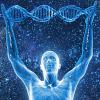Forgive the dumb question here but is increased NAD metabolism necessarily a good thing? Maybe superficial but I thought the NAD story at least as it has been sold by the NR/NMN supplement companies is that your NAD levels fall over your lifetime and NR/NMN restore. If increased metabolism were a proxy for imcreased NAD that is otherwise not detectable, that sounds fine, but if your rate of NAD metabolism is revved up without NAD being restored, could that not be bad? Like if my car started burning gas at a higher rate, I run out faster...
Probably a stupid question so please be gentle... Use your imagination and pretend I did not get a PhD in biochemistry like seemingly everyone else here. 
This study found NAD+ levels do not drop in muscle and brain as we age.
It also found that 1 gram of NR per day does not increase levels of NAD+ or NR in the muscle.
Those 2 points are new, and seem contrary to how I thought about it previously, but actually make a lot of sense when taken together.
As Dr Brenner points out, they did see doubled NAAD and MeNAM in muscle, which is evidence of increased NAD+ turnover.
If NAD+ levels do not drop as we age it really isn't surprising it doesn't increase with supplementation. There is a natural setpoint level for NAD+ in muscle that doesn't change with age.
So, NAD+ turnover is increased with supplementation, even though NR levels in blood or muscle are unchanged. How is that?
NR levels in the blood and muscle are unchanged. However:
NAD+ levels in the blood do drop as we age. This study didn't mention it, but that has been confirmed numerous times.
NR supplementation doubled NAD+ levels in the blood.
The increased NAD+ in the blood results in very positive improvement in inflammation markers.
Muscle benefits from the increased levels of NAD+ in the blood also, with increased turnover of NAD+ even though levels of NAD+ in muscle do not lower with age or increase with supplementation.
It seems obvious to me that increasing levels of NAD+ in the blood is the method of action from NR, (and likely NMN) supplementation.
Whether it is direct, or broken down to NR to enter the cell, or what - it is the doubled level of NAD+ that provide benefit.
Some interesting observations about this here on twitter
Dr Sinclair:
" I know of a couple of labs tracing NAD precursors through mice over time. Some fraction of the precursors enter cells intact, some doesn’t, but NAD is elevated higher than other approaches - that’s the bottom line. Human trials at Metrobiotech continue to go well in that regard."
Dr Sinclair says whatever the step across a cell membrane is, doesn't matter.
I agree with Dr Sinclair here. Increasing NAD+ in the blood is what matters. All these molecules are easily converted back and forth as needed, apparently with no bottlenecks.
In the body an NR molecule is likely "best" at crossing cell membrane, but taking 1 gram a day of NR has no effect on the NR levels in the body so it isn't really acting as NR, or helping to get more NAD+ into a cell.
It seems the body keeps the level of NR it needs on hand, just as it keeps the level of NAD+ it needs in skeletal muscle constant.
In my understanding, NAD+ in the blood (fed by the liver) is the reservoir for the body that changes as we age, and can be influenced by NAD+ precursors, and many other products.
You cannot change the level of NR stored in blood or elsewhere by supplementation. It is converted to NAD+ (or NMN) for storage and use throughout the body. Excess amounts end up in urine.
Exogenous NR increases NAD+ in the blood. If it is most effective at that, great.
Edited by able, 02 July 2019 - 04:30 PM.
































 This topic is locked
This topic is locked


























